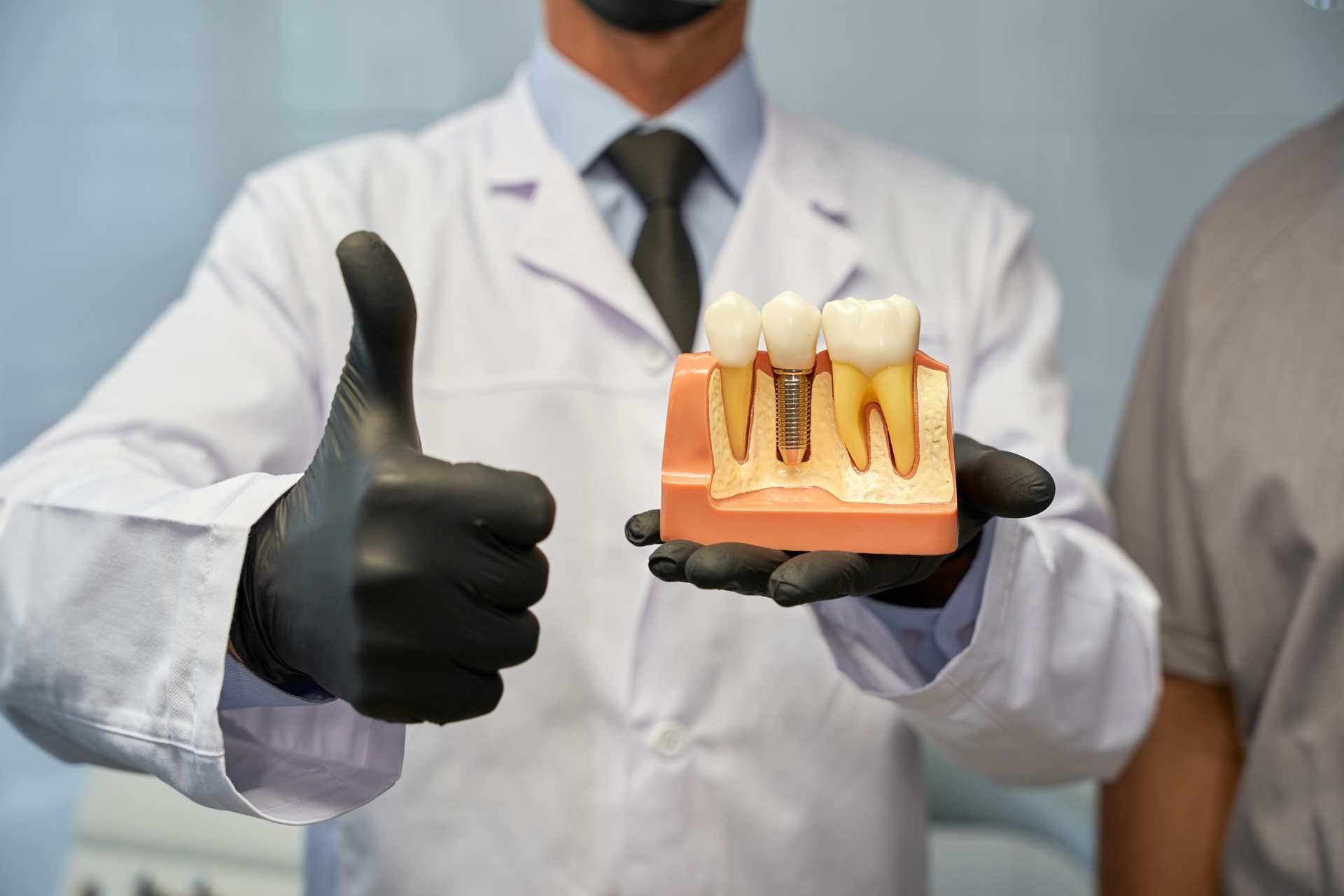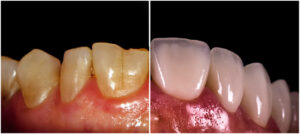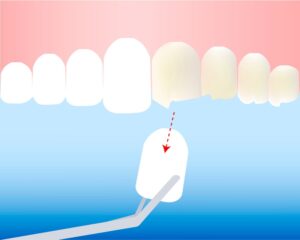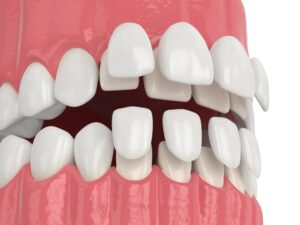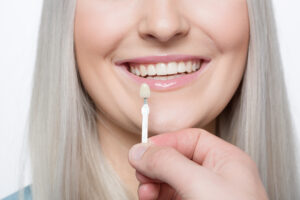The hybrid prosthesis is one of the best dental solutions to compensate for tooth loss, also known as edentulism. Losing your teeth is one of those fears that develop as we age. However, you should understand that teeth do not fall out due to age per se, but due to the accumulation of various factors, which worsen over time:
- Having a lifetime of poor oral hygiene is one of the factors that worsen over time and can cause periodontal disease.
- Another risk factor is the excessive consumption of sugars and fats, which can cause cavities. Cavities, when not treated in time, lead to the loss of the affected tooth or teeth.
- There is also the possibility of some trauma or accident, or bone diseases, which cause tooth loss. But they are less frequent.
Many people lose one or more teeth over the years. Hence the importance of having the possibility of getting a hybrid prosthesis, especially in those cases where there is no remedy.
In this article, we will show you everything you need to know about hybrid prosthetics. But remember that it is always better to take maximum care of your natural teeth so that they last as long as possible or for a lifetime.
If you are interested in receiving porcelain veneers Miami, call us at 786 603 7514.
What is a hybrid prosthesis?
The hybrid prosthesis is one of the most modern solutions that dentistry offers us with regard to solving edentulism. To fully understand what a hybrid prosthesis is, we must first understand several concepts.
The word “prosthesis” is used in medicine to refer to the “artificial repair of an organ”. Prostheses are used by many medical specialties. This helps to restore or recreate the anatomy of one or more teeth in a personalized way.
There are two types of prostheses:
- Fixed prostheses (to which the hybrid prosthesis belongs).
- Removable dentures.
Fixed hybrid prostheses need to be adhered to dental implants since they require a firm anchorage to the bone and tissues.
In conclusion, we can say that the hybrid prosthesis is a fixed prosthesis technique, which combines fixation to dental implants with the mucosal surface of the gums, to achieve a better fit and improved aesthetics.
This technique is widely used in edentulous patients who seek to have very functional teeth that are as close to natural as possible. The hybrid prosthesis is screwed on dental implants previously fixed and adapted to the bone structure. To fix an upper hybrid prosthesis, 5 to 6 implants are required. If the hybrid prosthesis is for a lower arch, only 4 implants are required.
Types of hybrid prostheses according to the manufacturing materials
Hybrid prostheses are classified according to the type of materials used for their manufacture. Thus, we have:
- Hybrid metal and acrylic prosthesis: This consists of an internal metal core (titanium or chrome-nickel) that is covered by acrylic or gradia resin, from which the gums and teeth are formed. It has the advantage of being the cheapest hybrid prosthesis. In terms of aesthetics, it is similar to that provided by overdentures.
- Hybrid metal and ceramic prosthesis: This consists of a metal core (titanium or chrome-nickel) that is coated with high-resistance feldspathic ceramic. Ceramics mimic the natural shape and color of teeth and gums, thus achieving a medium to high level of aesthetics. Its cost is higher than that of the hybrid metal and acrylic prosthesis, but it has greater durability and adaptation.
- Zirconium-Ceramic Hybrid Prosthesis: In this type of hybrid prosthesis, the metal core is zirconium, and the outer part is feldspathic ceramic. Zirconium has the property of being a white colored metal. This means that when the zirconium core is covered with ceramic, a very high level of aesthetics is achieved. This hybrid prosthesis is a bit more expensive than the metal and ceramic one.
- Hybrid peek prosthesis, without metal alloys: These are hybrid prostheses that do not have a metal core but rather a thermoplastic polymer called peek. This biomaterial, a substitute for metal, is ideal for people who have allergies to implants and hybrid prostheses that use metals. It is highly resistant to changes in temperature and abrasion, to attack by chemicals and solvents, and has a low coefficient of friction. When covered with ceramic, the aesthetic result and comfort is very high.
Benefits of wearing a hybrid prosthesis
Let us look at the extensive benefits of the use of the hybrid prosthesis and what makes it one of the most used prostheses by patients (especially by those who suffer from total edentulism):
1. Aesthetics as a tool of psychology
One of the greatest benefits of the hybrid prosthesis is its aesthetics. This is because it has a well-prepared finish that almost perfectly mimics natural teeth and the mucosa of the gums.
In general, people who lose teeth are not only affected physically but also psychologically. Toothless gums create an expression on the face that ages the face. The lips sink into the mouth and are no longer erect, and the jaw tends to lean forward. Also, all this affects speech since words cannot be pronounced correctly.
These things can cause problems such as loss of self-esteem, insecurity, or depression (even isolation, because nobody wants to be seen like this). That is why being able to wear a hybrid prosthesis, well fixed on dental implants, generates in the person basic confidence and security which promotes good social development.
2. High functionality
The feeling that patients who use hybrid prostheses experience are that of having their natural teeth again, and with very functional characteristics. One of the greatest benefits of this type of prosthesis is that, as it is tasteless and maintains a fixed position, it generates a very natural sensation. It also gives a lot of security in its use, since when it is fixed, there is no need to worry that it will detach from the gums.
3. It is easier to maintain than removable dentures
They do not have to be removed for daily cleaning, and this is a huge gain over removable prostheses or overdentures. Nor do you have to use the glues or cement that those who use mobile full-arch prostheses need to always have to hand. However, there are details that must be met to achieve good hygiene. In this section, we will look at “How to clean a hybrid prosthesis?”
4. Reduces the impact of occlusal forces
The hybrid prosthesis has better proprioception, since, by incorporating the acrylic, resin, or ceramic element as an intermediary, the chewing force does not directly reach the metal implants.
How long does a hybrid prosthesis last?
The approximate duration time for a hybrid prosthesis is between 5 and 10 years, although there are those who keep them for 2 decades. Of course, its greater durability will depend on the good hygiene practices of the person with the prosthesis and the quality of the materials used. Likewise, a visit to the dentist should be made approximately every 6 months, so that the hybrid prosthesis can be disassembled, and a deeper cleaning can be carried out. Depending on the type of material that covers the core, it may be necessary to redo some of the teeth.
Acrylic hybrid dentures typically require restoration every 2 years. This is because acrylic wears faster than ceramic. But the advantage that it has is that it will be much less expensive.
How to clean a hybrid prosthesis?
Cleaning or oral hygiene is a very important factor to keep the hybrid prosthesis in good condition. Although this type of prosthesis is much more practical for the patient to wear than overdentures or false teeth, it requires somewhat more drastic hygiene measures. Let us look at what these measures are:
Daily oral hygiene
The first thing is to have good daily oral hygiene, which consists of washing the hybrid prosthesis at least 3 times a day. It is best to use a medium-hard toothbrush, which reaches both the outer and inner sides of the hybrid prosthesis.
The force that we exert when washing the hybrid prosthesis should be similar to what we did with our natural teeth.
Use an interproximal or interdental brush
An interproximal or interdental brush can be more easily inserted under the hybrid prosthesis, to remove food debris that has accumulated and that can affect the hygiene of the implants. The correct way to use it is by making smooth incoming and outgoing movements.
Use a dental irrigator
It also requires the use of a dental irrigator. This tool has a device that allows the water to shoot with a certain pressure so that it penetrates into the gap that exists between the real gum and the gum of the hybrid prosthesis.
Continue flossing
The use of dental floss or silk will continue to be essential to maintain good interdental hygiene in the ceramic or acrylic part of the hybrid prosthesis.
Visit the dentist regularly
Finally, it is very important to attend check-ups and maintenance appointments with your dentist. The dentist must carry out disassembly of the hybrid prosthesis at least once a year, in order to carry out in-depth hygiene of the implants.
How much does a hybrid prosthesis cost?
The price of a hybrid prosthesis varies depending on the country and the materials used to make it. In general, the cost usually includes the placement of the implants on which the hybrid prosthesis will rest. If the arch is complete, the price will be higher. Compared to the price of an overdenture, the price of the hybrid prosthesis is high.
Below, you can see a comparative table of the prices of a full arch with implants included for hybrid prostheses in different countries. Keep in mind that these are approximate values and that they may vary within the same country:
| PRICE OF A HYBRID PROSTHESIS IN VARIOUS COUNTRIES (TABLE) | |
| Country | Price of the full arch ceramic hybrid prosthesis with dental implants included |
| United States | $32,518 |
| Spain | € 9,000 |
| Canada | CAD $ 26,176 |
| Mexico | MXN $ 73,017 |
